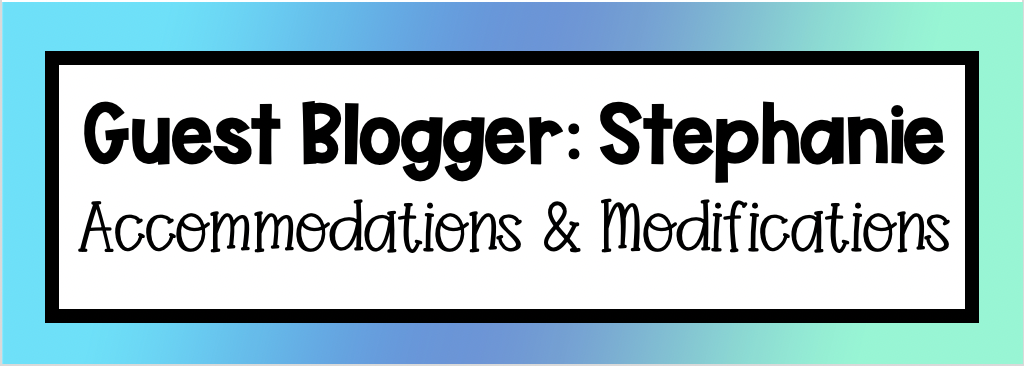I’m excited to introduce this week’s guest blogger: Stephanie from Mrs. D’s Corner to talk all about accommodations and modifications! You can also see her last guest blog post about teacher interviews, here!

The purpose of the IDEA, which protects the rights of families and students with disabilities and is the federal law that covers IEPs, is to prepare a child for “further education, employment, and independent living”. An IEP, or Individualized Education Program, is a blueprint for a disabled child’s education.
IEPs cover a lot of ground too. You have the Present Levels, the IEP goals, the student’s supports and services… and so much more!
One of the biggest pieces of a child’s IEP is the accommodations and modifications section, which falls under the supports and services.
But what is an accommodation? What is a modification? What’s the difference between the two? Do we need both of them for every child? Do we need them at all?
The short version is yes, you need this section of the IEP. So let’s break down what an accommodation and a modification are.

An accommodation changes how the student learns the material.
Student accommodations might include:
A modification changes what the student is taught or expected to learn and how he or she is graded. It’s a fundamental alteration of the material.
Student modifications might include:

It’s important too that when our students work with other adults and professionals, those adults and professionals know what each accommodation and modification means and looks like for that specific student.
For Student A, this accommodation might look like the teacher providing a copy of the lesson notes. But for Student B, this accommodation might look like an audio recording of the lesson is being provided. And maybe for Student C, the teacher is providing guided notes for Student C to fill in during the lesson.
Teacher trainings and supports written into the IEP don’t have to take up hours of time on anyone’s end either. This conversation may take 5 or 10 minutes and then everyone is on the same team, everyone knows what this accommodation looks like for this specific student and how to provide it.
Simply put, accommodations change how the student learns and modifications change what they learn. Whatever accommodations you determine for each student’s IEP, make sure each accommodation and modification are chosen specifically for each student based on the data and the student’s IEP goals.
Here are 9 ways that you can adapt your curriculum to fit your student needs!
Instagram | TeachersPayTeachers | Facebook | Boom Learning Library | Pinterest
What are you looking for?
COPYRIGHT © 2025 Full SPED Ahead